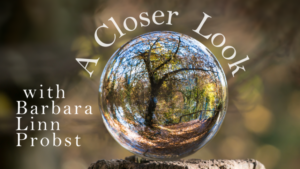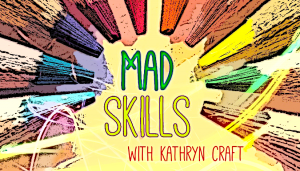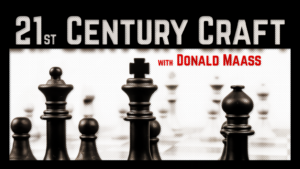Buzz, Balls & Hype
Greetings, WU family! I’m pleased to be back with the latest in my Up Close series—a series designed to provide insight into the publishing industry from various stakeholders, including authors, agents, publishers, and today’s guest, a media strategist. A veteran of the publishing industry, Linda A. Duggins is the former Senior Director of Publicity at Grand Central Publishing/Hachette Book Group where she led successful national campaigns for authors such as Tayari Jones, Jane Goodall, and the late Octavia E. Butler. In her current role as an Independent Media Strategist, Linda helps authors identify their books’ key selling points and teaches them how to leverage media opportunities to build awareness and boost sales. In today’s Q&A, Linda offers valuable insight into crafting a clear and compelling message about your books and your writing.
GW: Thank you for agreeing to this Q&A. First, can you tell us a bit about your career in publishing as it relates to media and publicity?
LD: There has never been a time that I did not enjoy talking about books. Spreading the word about amazing reads that keep me up at night or make me think well beyond the last page has been an ongoing experience for me. Prior to my publicity role at Grand Central Publishing, as co-founder of the Harlem Book Fair, I spent a considerable amount of time pitching various stories about the book fair, the authors and their books, and information about the various organizations that supported the work around what the book fair entailed. I was that person on the subway in NYC passing out upcoming book event postcards and advanced reader copies to just about anyone who dared to look at me. The organic transition to becoming an in-house book publicist was challenging and very exciting. Getting the media and booksellers to pay close enough attention required strategy, effective people skills, perseverance, timing, and luck. There was plenty of reading, book campaign strategizing, meeting media professionals, book tour planning, and engaging with book club members as well as booksellers and librarians. It’s really a blended affair, with collaboration inside the publishing house as well, with editors, marketers, the creative team, sales, audio, and many others.
GW: What exactly is media training and how does it relate to authors, both self-published and traditionally published?
LD: Media training is a form of communication coaching designed to help an author navigate interactions with the media to effectively convey their message, handle interviews, and manage conversations about various topics including: the author’s backstory, writing career, and book details, just to name a few. With media training, the goal is to help authors learn how to keep the title of their books and the key selling points up front and top of mind during interviews.
Read More
Today’s post was inspired by a novelist friend of mine who has been having a hard time of it lately, and in their struggle to regain footing in the fiction market, suggested that I address the question of how to keep the faith in today’s challenging publishing environment. What follows are my thoughts and observations about what’s going on and why, and what can be done, and whether there’s any cause for hope. I welcome your thoughts and observations, too.
Times are tough these days for novelists who are not long-established perennial bestsellers, literary luminaries, or aren’t named (for example) Colleen Hoover, Bonnie Garmus, Rebecca Yarros, Taylor Jenkins Reid, Hannah Grace, or Ana Huang.
Fiction sales to consumers over the past three years have been robust in comparison to pre-pandemic years. Yet, across genres, published and aspiring authors alike are finding it especially difficult to get read, whether that be by editors or agents or the reading public. Authors who’ve been in the business for a while (sometimes for decades) can’t get new book deals. Agents are rejecting new authors at even higher rates than usual. What gives?
I should note that publishing always has a component of what I call “eight-year-olds chasing the soccer ball”—wherever the ball is going at any given time, the herd is running after it. Which is to say that when a given genre or sub-genre starts trending, a significant proportion of the publishing ecosystem, from writer to bookseller and all points between, wants in. In years past, this wasn’t especially problematic for those who exist outside of the trend(s); there was demand for and space for all kinds of books. So what’s changed?
Let’s look, first, at space. National media book coverage has shrunk to almost nothing, and where it exists, coverage has in many cases become so clotted with titles that it’s practically meaningless (take for example, EW’s recent list of “The 42 fall books we’re most excited to read”). Bookstore space is also tighter, due to rising rents, the proliferation of eBooks, and online book-buying. What’s more, many physical bookstores, wanting to capitalize on the biggest trending books, are prioritizing that handful of titles by placing even larger orders and creating big, obvious, exclusive displays. Publishing space—meaning the number of publishing imprints as well as the number of books being acquired—has contracted, too.
Now, demand. Demand is a wibbly concept. Seen one way, it’s demonstrated concretely by what readers are buying en mass. The books they’re buying, though, are less a reflection of what, independent of influence, they may desire than of what they see the most of (this is the principle behind advertising; create demand). By the same token, if we don’t know a book exists because we haven’t seen or heard about it wherever we spend our time, we aren’t going to seek it out—and this creates a perception that there was no demand for it. (This is the all-too-common Kiss of Death for authors’ careers.)
These days, the primary, most effective book-discovery resource is TikTok—where nearly 75% of users are younger than 45, and 44% are under 25. During the early phase of the pandemic, lightning struck Colleen Hoover there. Her blaze was astonishing. If I’m recalling correctly, I think that […]
Read More














